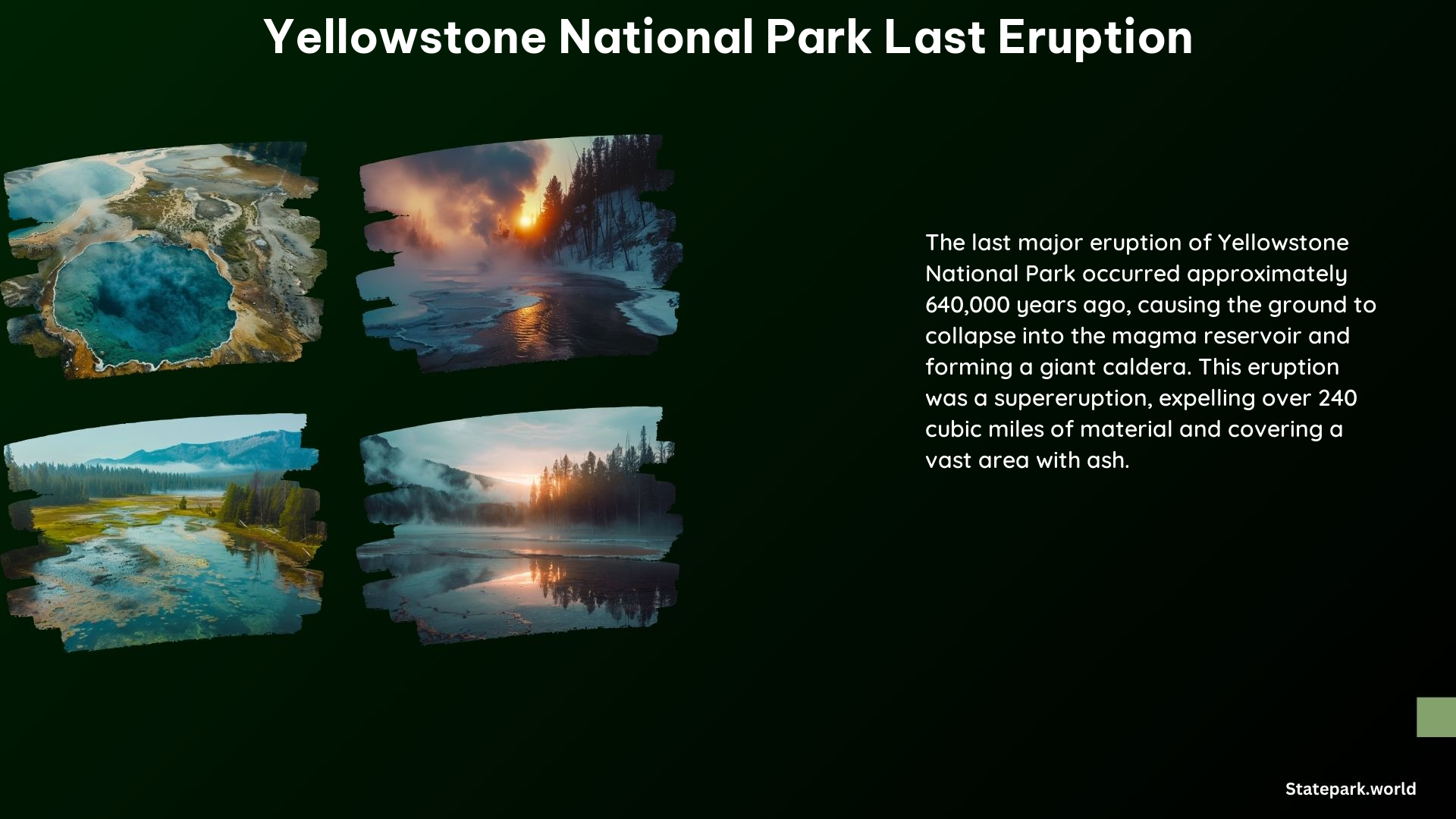Yellowstone National Park is renowned for its stunning natural beauty, from its majestic mountains to its iconic geysers. However, beneath the surface lies a geological marvel that has captivated scientists and visitors alike – the Yellowstone Caldera, the result of the park’s last major eruption. In this blog post, we’ll delve into the fascinating history of Yellowstone’s volcanic activity, focusing on the park’s last eruption and its lasting impact.
The Yellowstone Caldera: A Supervolcano’s Legacy
Yellowstone National Park’s last major eruption occurred approximately 640,000 years ago, forming the Yellowstone Caldera. This eruption was a supereruption, ejecting around 1,000 cubic kilometers (240 cubic miles) of rock, dust, and volcanic ash into the atmosphere. The sheer scale of this event is difficult to comprehend, as it was one of the largest volcanic eruptions in Earth’s history.
The Timeline of Yellowstone’s Volcanic Activity

Yellowstone’s volcanic history is a complex and fascinating story, with several major eruptions that have shaped the landscape over millions of years. Here’s a timeline of the park’s most significant volcanic events:
- 2.1 million years ago: The Huckleberry Ridge Tuff eruption, the largest of the three supereruptions, producing 2,500 times as much ash as the 1980 Mount St. Helens eruption.
- 1.3 million years ago: The Henry’s Fork Caldera eruption, producing the Mesa Falls Tuff.
- 640,000 years ago: The Lava Creek eruption, forming the Yellowstone Caldera and producing the Lava Creek Tuff.
- 174,000 years ago: A violent eruption excavated the West Thumb of Yellowstone Lake.
- 70,000 years ago: The most recent lava flow.
The Aftermath of the Yellowstone Caldera Eruption
The Yellowstone Caldera eruption had a profound impact on the region and the global climate. The massive amount of ash and debris ejected into the atmosphere would have blocked out the sun, causing a significant drop in global temperatures and disrupting weather patterns worldwide.
The eruption also left a lasting mark on the landscape, creating a vast depression in the earth’s surface known as the Yellowstone Caldera. This caldera is approximately 30 miles (48 kilometers) wide and 45 miles (72 kilometers) long, making it one of the largest calderas in the world.
Monitoring and Current Activity
Despite the dramatic events of the past, Yellowstone National Park remains an active volcanic system. Geologists closely monitor the elevation of the Yellowstone Plateau, which has been rising due to magma chamber pressure. The Yellowstone Volcano Observatory tracks seismicity and ground deformation to predict potential eruptions.
While the volcano is active, there is no indication of an imminent supereruption. The last major eruption was over 600,000 years ago, and the park’s volcanic activity has been relatively stable in recent centuries. However, the potential for a future eruption, even a smaller one, remains a concern for scientists and park officials.
Conclusion
Yellowstone National Park’s last major eruption, the Lava Creek eruption, was a truly remarkable geological event that has left an indelible mark on the landscape and the global climate. The park’s volcanic history is a testament to the power of the Earth’s internal processes and the ongoing evolution of our planet.
As visitors explore the wonders of Yellowstone, they can’t help but be in awe of the park’s volcanic past and the potential for future activity. By understanding the history and monitoring the current state of the Yellowstone Caldera, we can better appreciate the dynamic and ever-changing nature of this remarkable natural wonder.
References:
- USGS.gov: Questions About Yellowstone Volcanic History
- Wikipedia.org: Yellowstone Caldera
- Yellowstonepark.com: Yellowstone is a Volcano
- USGS.gov: When was the last time Yellowstone erupted?
- ScientificAmerican.com: Yellowstone Supervolcano Eruptions Were Even More Explosive Than We Knew
